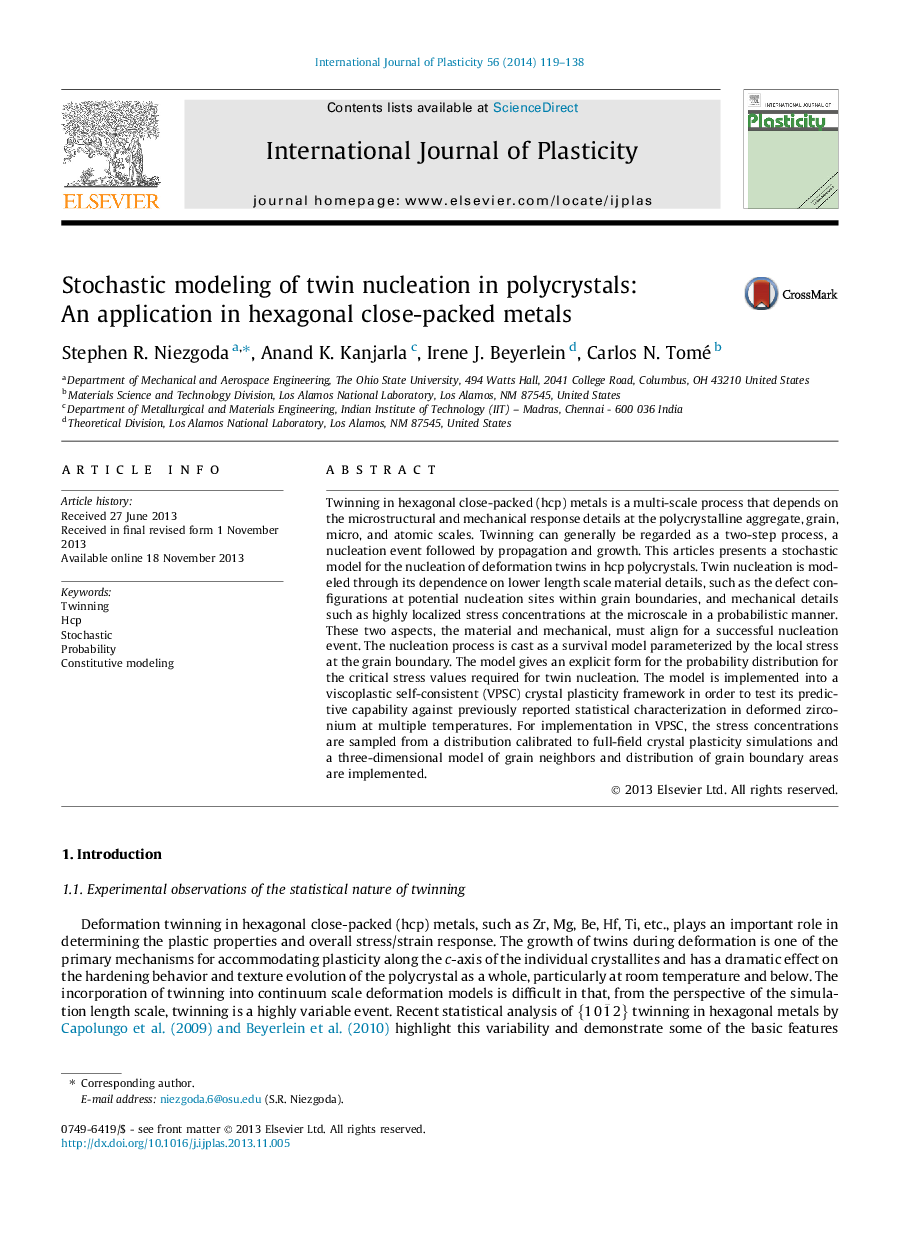| Article ID | Journal | Published Year | Pages | File Type |
|---|---|---|---|---|
| 784395 | International Journal of Plasticity | 2014 | 20 Pages |
•Twin nucleation is modeled as a stochastic process.•Variable multiscale microstructure effects captured via probability distributions.•Model predicts distribution of critical nucleation strengths in hcp metals.•Model implemented in a visco-plastic self consistent framework.•Model correctly predicts twin variant selection and temperature dependence on twinning in zirconium.
Twinning in hexagonal close-packed (hcp) metals is a multi-scale process that depends on the microstructural and mechanical response details at the polycrystalline aggregate, grain, micro, and atomic scales. Twinning can generally be regarded as a two-step process, a nucleation event followed by propagation and growth. This articles presents a stochastic model for the nucleation of deformation twins in hcp polycrystals. Twin nucleation is modeled through its dependence on lower length scale material details, such as the defect configurations at potential nucleation sites within grain boundaries, and mechanical details such as highly localized stress concentrations at the microscale in a probabilistic manner. These two aspects, the material and mechanical, must align for a successful nucleation event. The nucleation process is cast as a survival model parameterized by the local stress at the grain boundary. The model gives an explicit form for the probability distribution for the critical stress values required for twin nucleation. The model is implemented into a viscoplastic self-consistent (VPSC) crystal plasticity framework in order to test its predictive capability against previously reported statistical characterization in deformed zirconium at multiple temperatures. For implementation in VPSC, the stress concentrations are sampled from a distribution calibrated to full-field crystal plasticity simulations and a three-dimensional model of grain neighbors and distribution of grain boundary areas are implemented.
